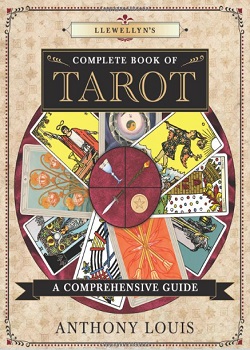Your Chosen Card – Three of Cups Reversed Golden Deck

When reversed, the Three of Cups suggests overindulgence in merriment. Rather than enjoying their good fortune, the individuals on the card may be selfishly exploiting the situation and getting on each others nerves. There is a sense of excess or too much of a good thing. Perhaps they are behaving like party animals. If the querent inquired about a relationship, then difficulties with a partner or marital strife may be indicated.
Keywords Reversed: Excess sensuality, overindulgence, excess, overspending, selfishness, triangular love relationships, marital difficulties.
Timing: 10 Cancer20 Cancer. Tropical, 2 July11 July. Sidereal, 27 July5 August.
Astrology: Quick and clever Mercury in the second decan of watery Cancer also the realm of the Queen of Cups (Water of Water) and the Chariot (Cancer). Mercury is linked to the Magician.
Number Symbolism: 3 – fertility, creativity, a triadic relationship, the first fruits of a joint venture.
Mathers: Success, triumph, victory, favorable issue; (R) expedition of business, quickness, celerity, vigilance.
When Three of Cups is reversed you can pretty much take it that life is going well but that’s when life takes us by surprise. If Three of Cups is unclear it may help to choose a card from the Major Arcana to provide more insight into what it is Three of Cups is trying to tell you. If you had a particular issue in mind, or want to seek clarification on something else, you can also choose again to get more guidance.

This chosen card is part of your reversed card reading for Three of Cups using cards from the Golden Tarot Deck. You will find many more tarot pages that will be of great help if you need tarot card meanings. Use the search at the bottom of the page. We have some amazing tarot books for you to browse. Please see below.
Here are some snippets from a few of my favorite books

Book Details
Complete Book of Tarot: The silk cloth myth: always wrap your cards in silk cloth and store them in an oak box with crystals like quartz or amethyst.
Complete Book of Tarot: Author Rami M. Sharpiro, who recounts such Hasidic tales, explains: ‘Humans are storytelling animals Our stories define us, instruct us, create us. Without our stories we do not exist [f]or us our story is our self [a]nd the story you tell determines the meaning you derive from the events of your life.’ 24 The tarot too is a storytelling ritual that allows us to retell and even change our stories in ways that can heal us. Jane Sterns book Confessions of a Tarot Reader illustrates this storytelling approach; she tells real-life tales of a number of her tarot clients to illustrate the archetypal meanings of each of the cards of the major arcana.
- Do get in touch if you looked for Three of Cups and we don’t have it listed. We would be more than happy to source the information for you. We hope you visit again for more online tarot information!
Complete Book of Tarot: Author Rami M. Sharpiro, who recounts such Hasidic tales, explains: ‘Humans are storytelling animals Our stories define us, instruct us, create us. Without our stories we do not exist [f]or us our story is our self [a]nd the story you tell determines the meaning you derive from the events of your life.’ 24 The tarot too is a storytelling ritual that allows us to retell and even change our stories in ways that can heal us. Jane Sterns book Confessions of a Tarot Reader illustrates this storytelling approach; she tells real-life tales of a number of her tarot clients to illustrate the archetypal meanings of each of the cards of the major arcana.